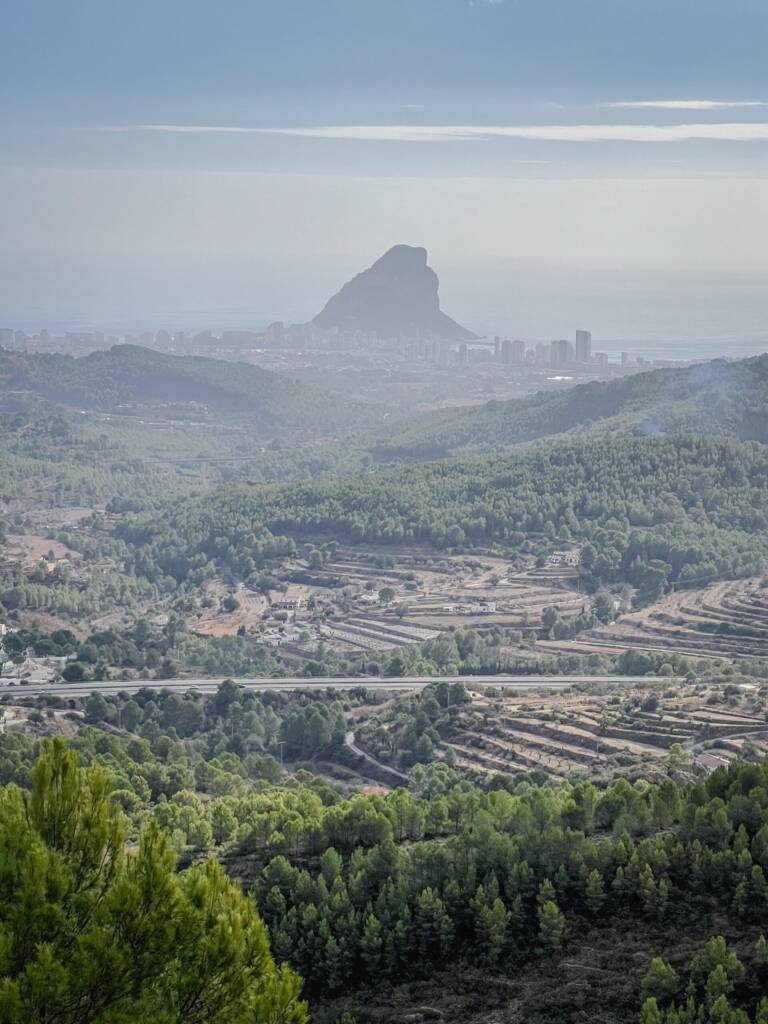
The period of my avoidance of the region colloquially known as “Calpe” (after its most popular, cycling town), extends throughout my cycling adventure. More precisely, starting from the moment I discovered that with a road bike the best fun is in the mountains. If I’m counting correctly, I can slowly prepare to celebrate my first decade of Calpian abstinence. Or rather, I might, if it weren’t for the fact that in January of the year of our Lord two thousand and twenty-four I finally made it to Spain’s Costa Blanca.
Just why actually avoid Calpe at all? Why so many negative reviews about it? And finally, what, after so many years of effective avoidance, did a person have to experience that he nevertheless bought a ticket to Alicante? I hasten to explain, casting two buzzwords as bait: cyclo-cross and Pego.
Costa Blanca, or cycling paradise with a star
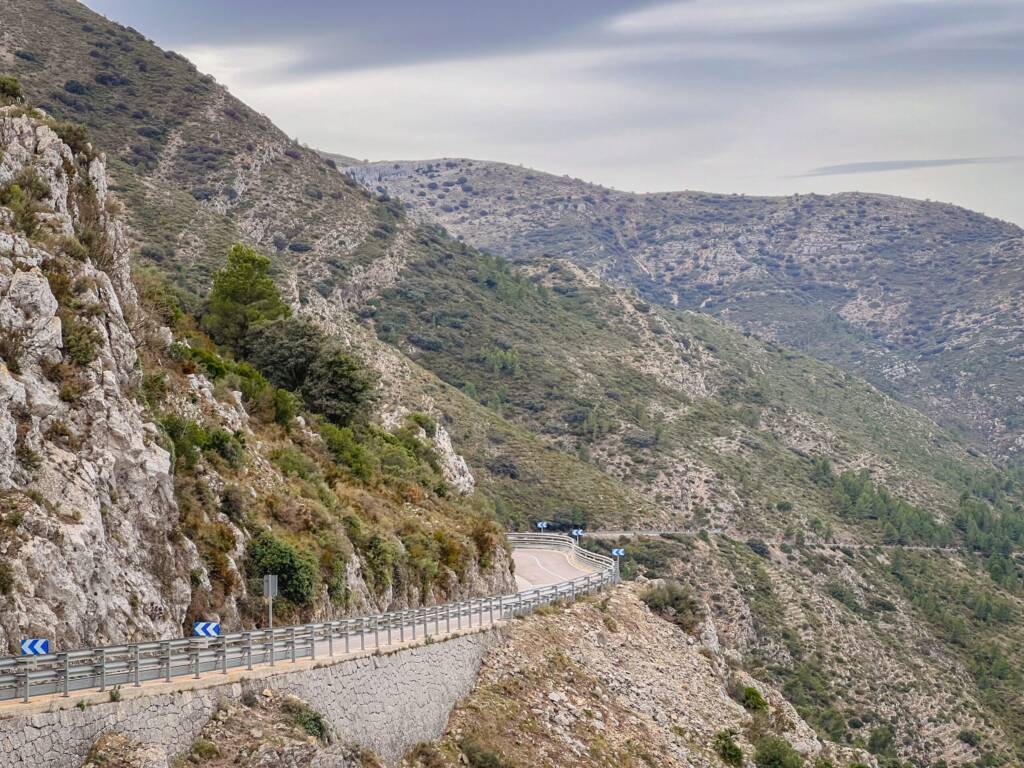
A week-long stay in the mountain ranges belonging to the Cordilleras Prebéticaand stretching across the province of Alicante and the province of Valencia emphatically showed me that there is somewhere to ride. The 100-kilometer loops usually contained about two thousand meters of elevation gain on excellent and scenic asphalts. The drivers, the vast majority of whom were patient and cautious, helped make the ride enjoyable.
However, in order to truly appreciate the region, there is a need for a certain trick in all of this.
Let’s start with a glance at the map. The Costa Blanca, or White Coast, is a stretch of Spanish coastline with its coastal towns, stretching between Valencia and Alicante. Among the most well-known tourist resorts are seventy-thousand-year-old Benidorm and, slightly smaller, Calpe. Standing on the coast with our faces facing the Mediterranean, behind us will be what cyclists, or at least most of those visiting the region, are most interested in, the mountains.
However, a closer look at the topography of the area will reveal another aspect of it: the aforementioned mountain ranges, hiding a huge, even difficult to estimate number of climbs, are separated from the coastal towns by the highway and the N-332 road. Unfortunately, the very unpleasant, busy and narrow road number N-332 is almost the backbone of many loops for cyclists stopping in Calpe; it also serves as an access and exit road. Of course, it can be bypassed, or at least to some extent, but the very large number of cyclists traveling along it shows that it plays an important role for them on a daily basis.
The city itself, on the other hand, to which I made one and hopefully my last visit, is completely repulsive to me. Yes, there is everything to be found there, including bicycle services and fast food, but the atmosphere of a nasty, bland resort like from Orbis catalogs from the mid-1990s did not encourage me to ever spend a vacation there. Especially since, during my more than week-long stay in the region, I managed to learn that everything good for a cyclist is found deep in the mountains, and there, from Calpe, it’s mostly just far away.
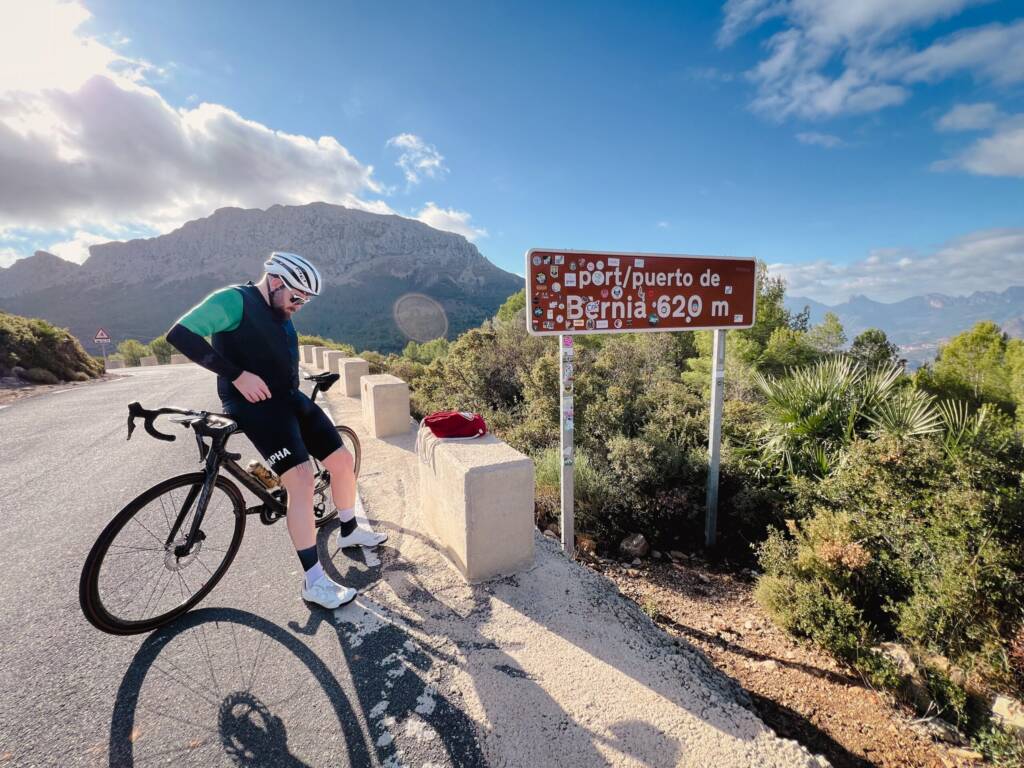
However, there are advantages to its existence – most of the cycling crowd is concentrated near the coast, partly on the not-so-beautiful Calpian hills, and partly on the local climbs of the kind of “classics” like Bernia via Pinos. Thanks to this, despite the immense popularity of the province of Alicante among cyclists, it is still possible to hit places there that are unbelievably spectacular and at the same time completely empty, without having to get there. All you need to do is know where to start from and which way to look. Exactly where to start from?
Pego.cc
And here, all in white, enters Pego. A small, insanely atmospheric town of ten thousand people at the foot of the mountains. A town offering not only an array of grocery stores of surprising quality and affordable prices (Mercadona my love!), cafes and restaurants with all sorts of cuisines, but most importantly with at least three different exits from the town, which itself takes no more than a few minutes, leading towards as many as five different driveways! It is worth mentioning that one of them is the mecca of intervals, the famous Vall d’Ebo. And should anyone wish to take a break from driving up, just direct their steps toward the sea, to which in a straight line we have no more than ten kilometers from Pego. I’ve visited many places with a bicycle, but this multitude of possibilities and their accessibility is truly unique in Pego.
And why the addition of “cc” in the headline? Well, should anyone decide to stay in Pego, I hasten to inform you that a cycling base with accommodations and bicycle rentals has opened there with just such a name – Pego.cc. It was there that I spent the smug week with a hook, drawing handfuls from the hospitality of my hosts and their knowledge of the region (thanks again Peter for all the routes!). I will immediately point out that I have absolutely nothing from this recommendation and have not, I just sincerely appreciate all the advantages of the place. The base itself is developing dynamically, just to mention the fact that during my stay the roof terrace of the building was covered, which created a scenic place to relax.
Having tossed off a potential finish line in Costa Blanca, I’ll now turn to a few words about what to actually do there on a (road) bicycle.
Where to go, who to meet, or when Tadej Pogacar greets you

Certainly one of the motivations for winter visits to the Costa Blanca is the opportunity to meet cycling pros. Pro riders stationed in Calpe, Benidorm or Denia appear on the local roads in veritable herds. It’s easy to come across individual riders, small groups and even entire teams training. For example, on the climb up Vall d’Ebo I came across a huge Lidl Trek squad with the likes of Jolanda Neff and Evie Richards. I can’t hide the fact that for me, too, it was a lot of fun to see idols known from television in action, especially since I had the pleasure of passing Mathieu van der Poel and Tadej Pogacar, who were later shown training together on social media. Mathieu didn’t wave me off, but Tadej did 😉
Nevertheless, I must point out that for someone who appreciates peace and space, it can sometimes be overwhelming. Especially that in the case of training whole teams, technical cars usually follow behind and in front of the group (throughout the trip I was “stalked” by the Total Energie team and Rafał Majka). Admittedly, I did not once encounter any unpleasant treatment, on the contrary, very often it was the professionals who greeted me first, but there were times that on a narrow mountain road passing a group of twenty riders accompanied by a car required some gymnastics.
However, there is a way to do this as well – just stick to those “deeper” parts of the mountains, those farther from the sea. That’s where very few people really get to. Stressing that I still have plenty to see in those parts, I will now mention a few places or climbs that have already stolen my heart.
Coll de Rates 2.0
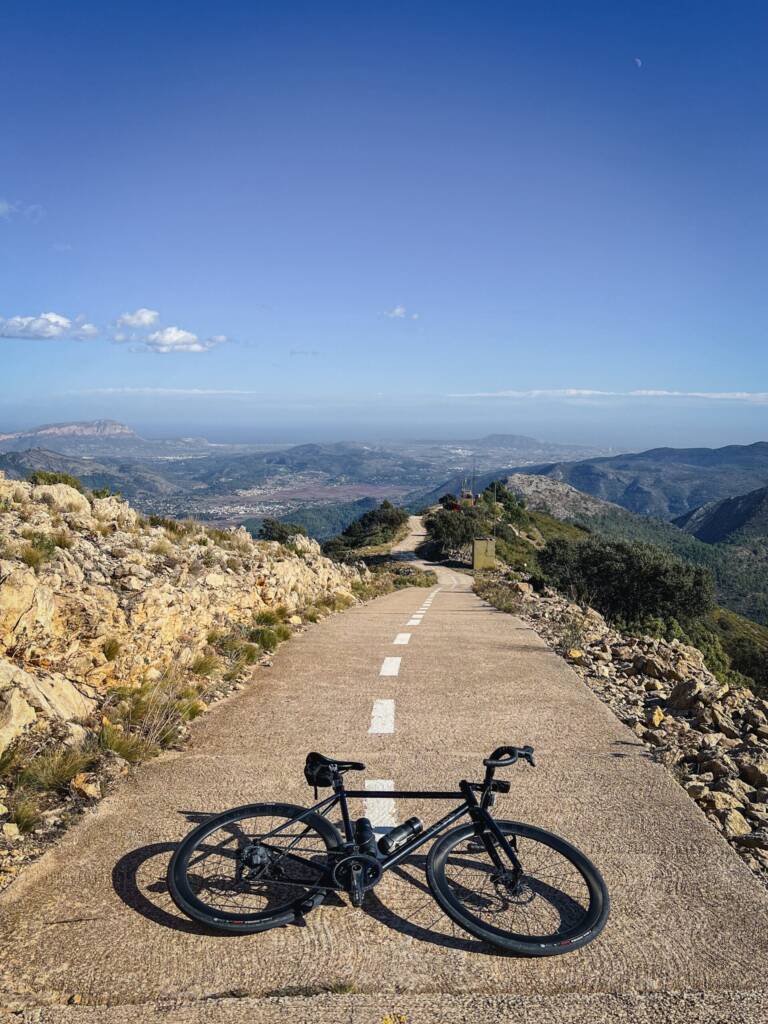
It’s hard not to start with one of the two names that probably every cyclist will momentarily associate with the Costa Blanca – Coll de Rates. One of the region’s favorite training climbs with a very favorable gradient for repetition, in addition to being actually scenic, has its own “add-on”, that is, the very section marked 2.0. From the top of the pass, you can bounce by a small restaurant in the direction of the actual summit. The concrete road, which begins with a short piece of gravel, is 3km with an average gradient of more than 10%, reaching 20% in places. The narrow road with distinctive white stripes leads upward in a relentless manner. It’s a really tough climb, but the views from the very top are magnificent. Be careful on the descent! Ahead are several tight switchbacks with a steep incline and, potentially, hikers.
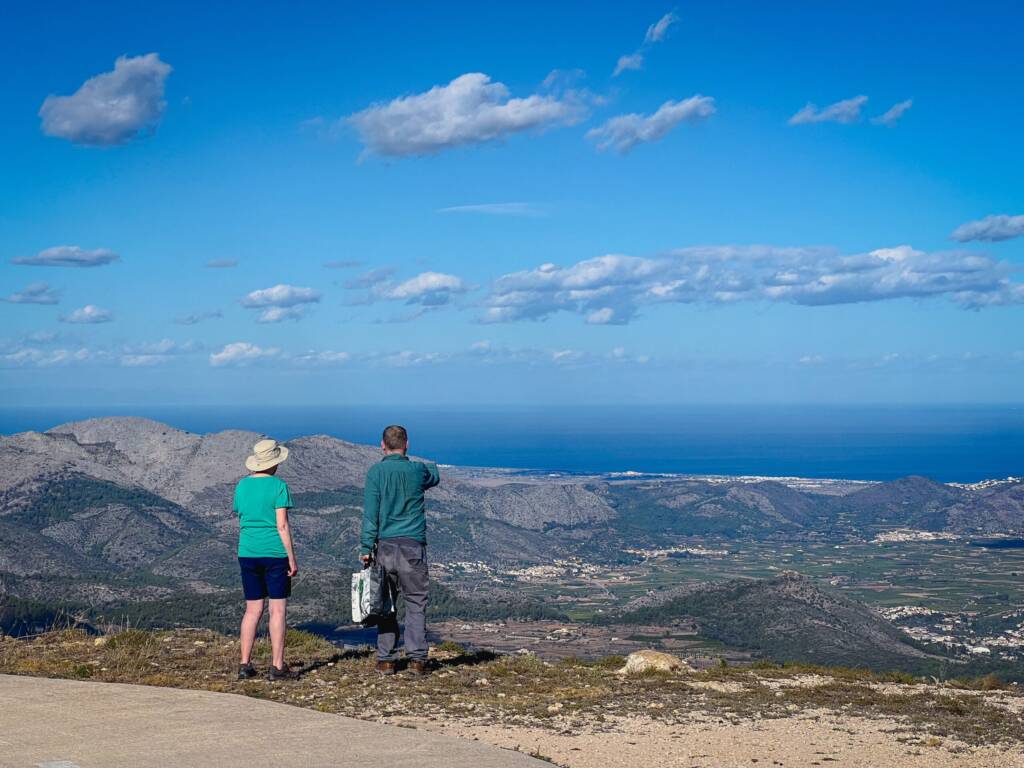
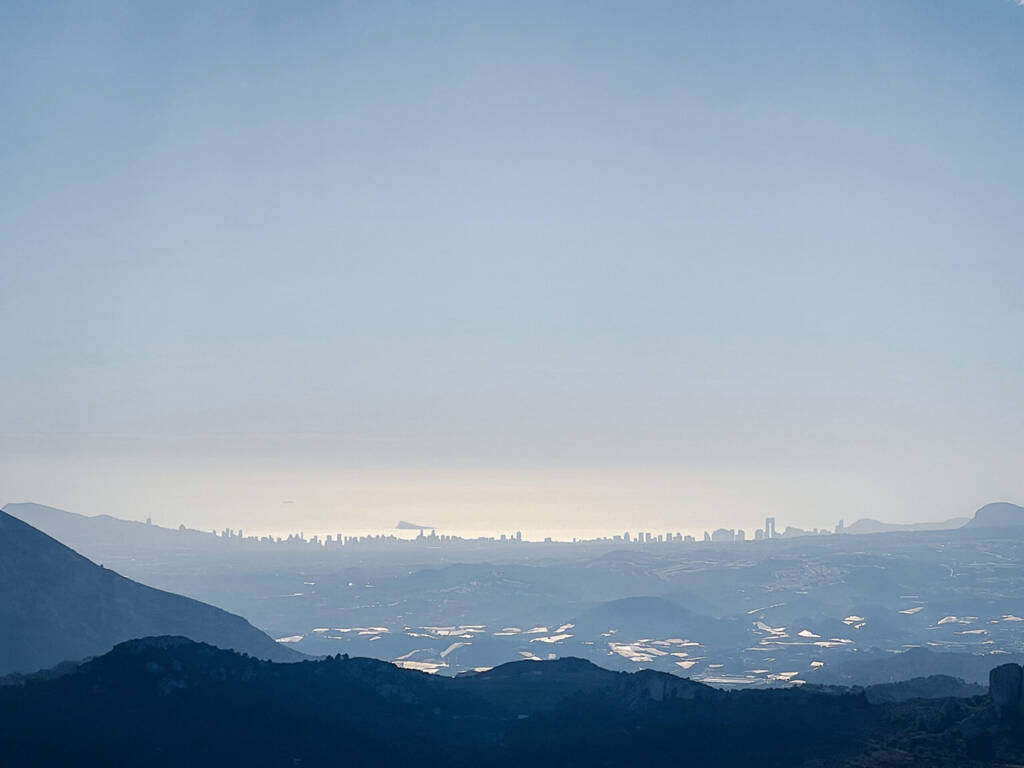
A plateau full of wind
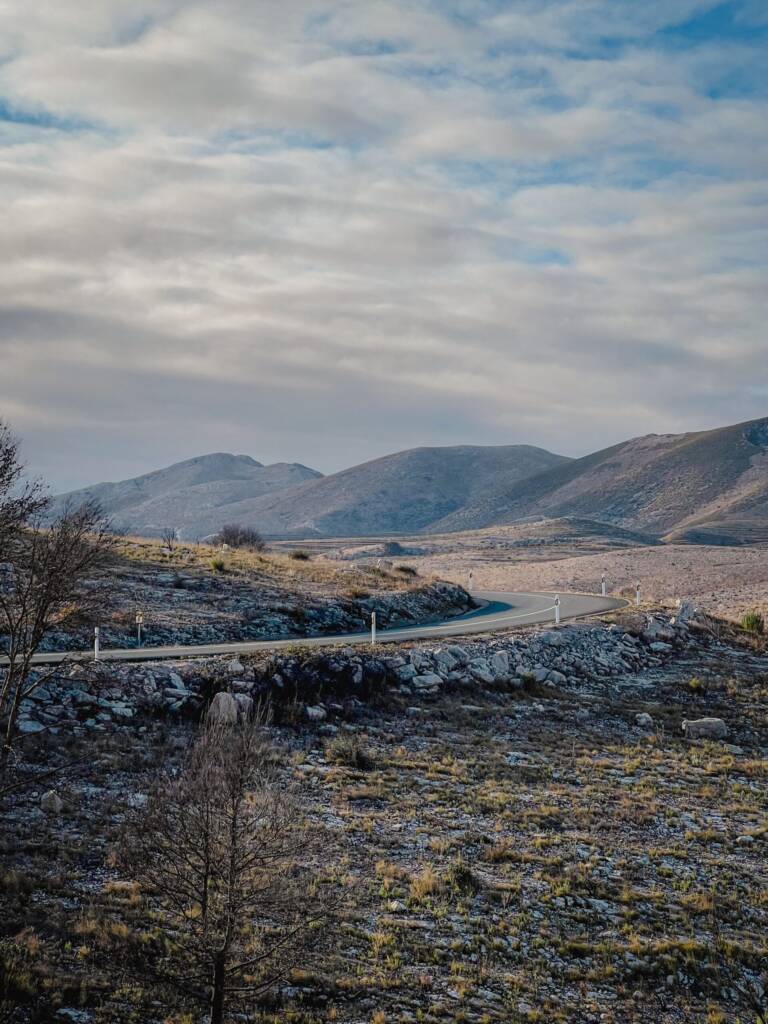
Another absolute classic is the climb to Vall d’Ebo from the Pego side. And this climb is also one of the favorite training spots not only for “pros”, but also for amateurs. The winding, steady 8km climb is littered with wads of the hundreds and even thousands of intervals that the asphalt there takes every day. However, what captivated me most in this area is a piece further on, and the driveway itself is a kind of gateway to it.
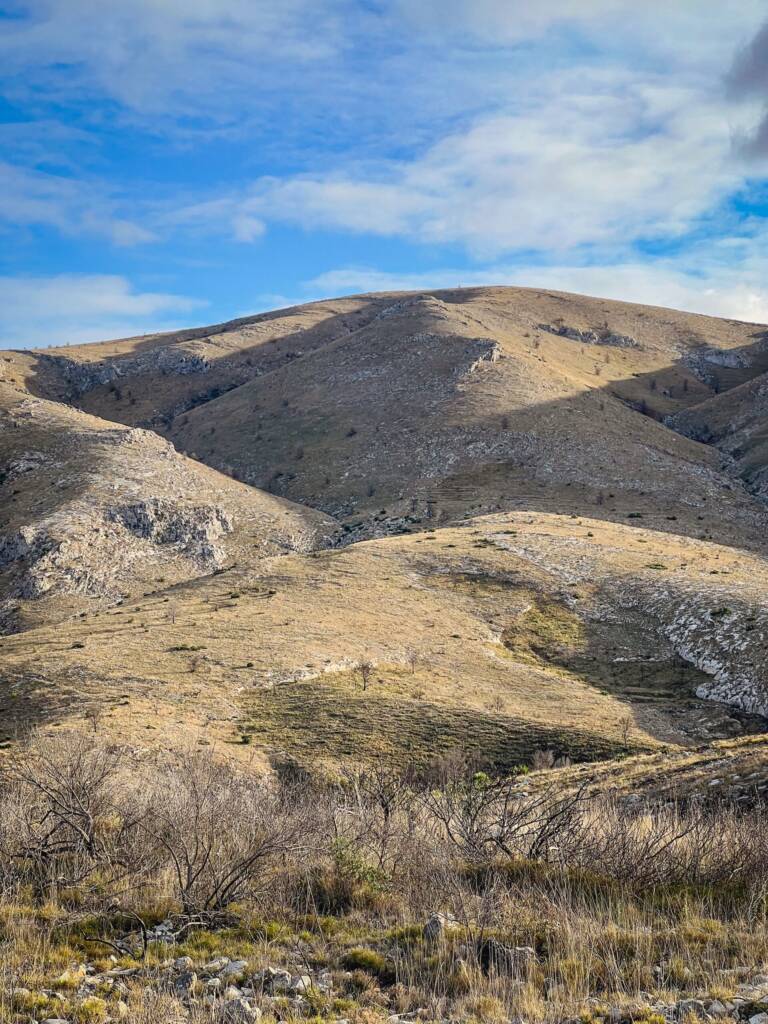
Pointing our wheels further west we will end up, after a rather short wall, in La Vall d’Alcalà. This valley, almost like a small plateau tightly surrounded by mountains, stands out for its lunar landscape. This is, unfortunately, largely the result of fires that have consumed the trees that cover it, and left pitch-black marks on the soil. Either way, I would describe the visual effect as spectacular. A gently drippy road flows through the valley for more than 10 kilometers. The lack of trees and open space provide ideal conditions for the wind – the wind here can accelerate to speeds much higher than in neighboring valleys, so on windy days I recommend abandoning the idea of visiting this unusual place.
La Vall de Laguar
After a moment’s pause for some rather flat treats, we return to the mighty gradients. The climb through La Vall de Laguar from Orba (called Puerto Novillos on Strava) is about 10km with an average gradient of 6.5%. Not much, but the real treat is the last two kilometers, which consist of only several-percent walls. By the way, this is also the part of the climb when the spectacular views of the valley really open up all around, but the wind is also unleashed.
To my surprise, it was there that I met, on an already very narrow road, a Total Energie group of more than ten riders, followed by a technical car. The French were riding, like me, uphill, while the Caja Rural car followed in the opposite direction. I have to admit that on these gradients, accommodating and passing safely was not easy, but it went smoothly thanks to the great culture and attentiveness of the professionals. I was even more surprised when I saw the whole group let go down the other side of the pass, where the gradient became even steeper. By the way, I would love to return to this place and ride it backwards.
Villalonga and the spaces of the Beniarrés Valley
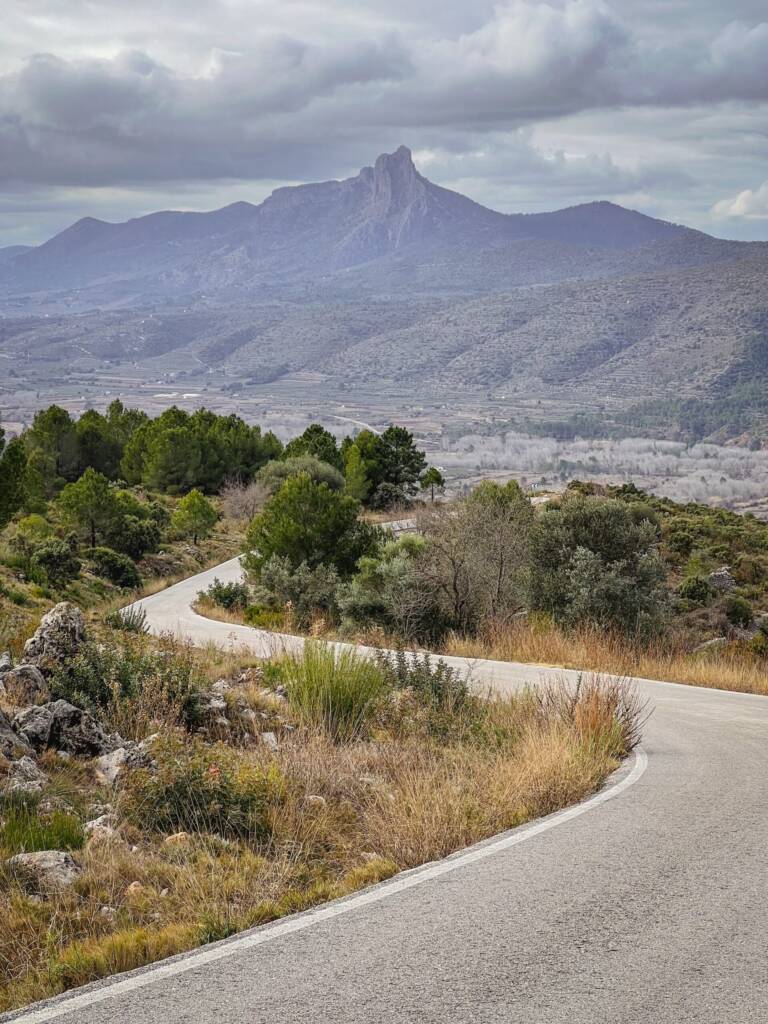
Villalonga is a town, and the long and relatively hard climb that starts there is known from the Vuelta a Espana. The town itself is located north of Pego, in not even a neighboring valley, as that would be considered the Vall de Gallinera, but another one, towards Valencia. From Pego you can get there via Oliva. The road to Oliva is distinguished by the beautiful view of the sea and the passage through tight, paved streets through Forna. The remoteness of this area from the Costa Blanca itself means that far fewer riders venture there than on the “classics” of the region. And it doesn’t end there, because after riding up Villalonga, it’s worth turning northwest toward Beniarrés. That’s where it just happens…
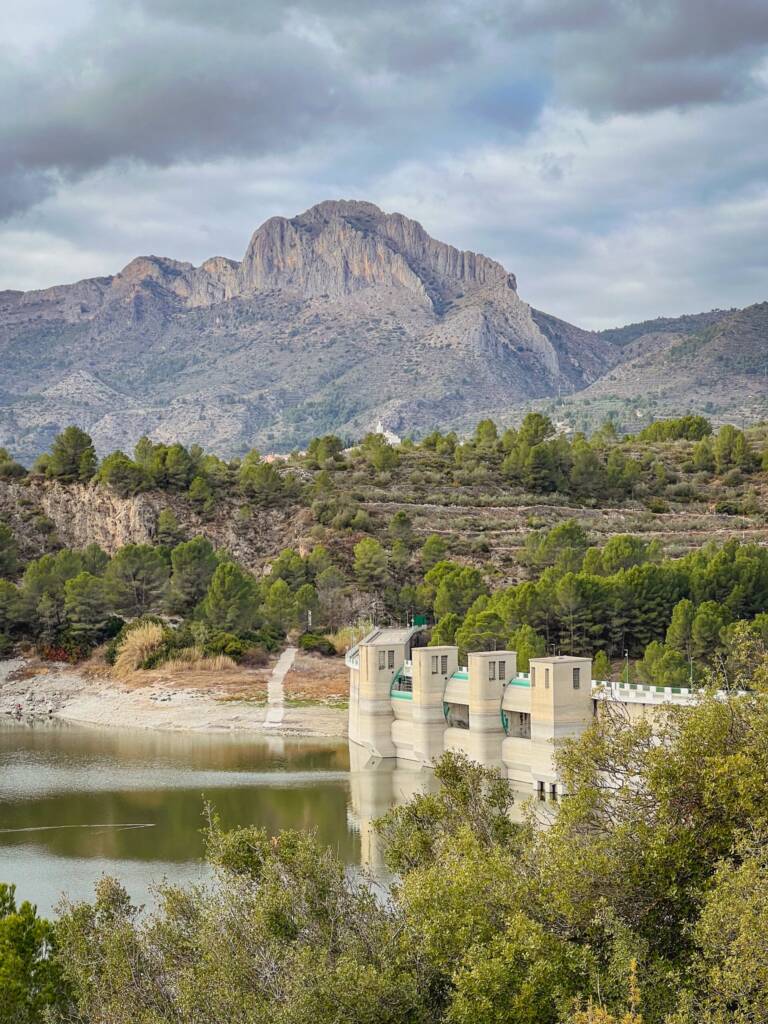
And actually nothing is happening, because there is almost no one there 🙂 And that is what is phenomenal! In fact, as soon as you make a right turn to the village of Lorcha, a spectacular view of the huge valley and the jagged, sharp peaks guarding its northern edge opens before your eyes. This view momentarily brought back memories of Carson Pass, when I drove through the mighty mountains from California to Nevada and saw a very similar landscape, only a little… bigger1. Through the valley it is worth driving to the lagoon and crossing the dam there. The rather stiff driveway behind it will lead us slowly towards the Vall de Gallinera. Rather, no one will bother us on this journey, so you can enjoy the scenery at will.
Petracos
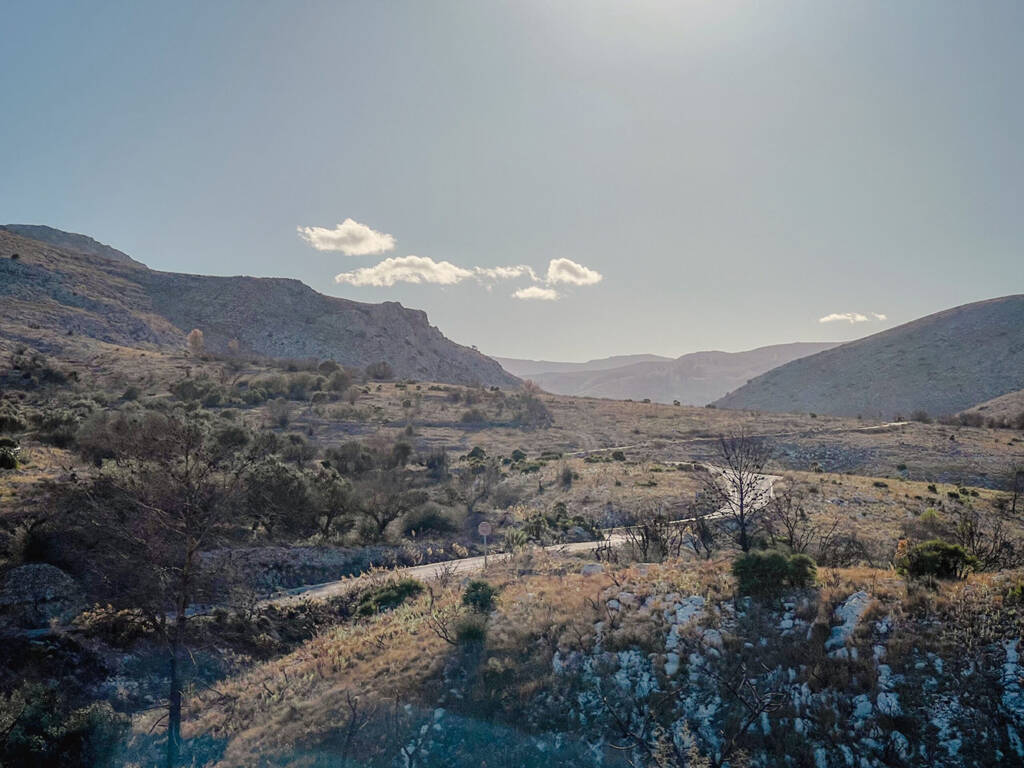
In the broader Pego area there is another place where you can “disappear” a bit – Pla de Petracos. A few kilometers away from Castell de Castell, the valley is magical. A beautiful path leads first through orange orchards, then gently winds up at the foot of the caves. And these are not just any caves, as you can find ancient wall drawings estimated to be more than 5,000 years old! When I was there, I met just two people and a small flock of sheep. Piotr Szymanski, on the other hand, told me that he often doesn’t even meet anyone there. If you decide to visit this wonderful place driving from Castell de Castells I recommend having the sun behind you. It is then worth stopping a few times and looking behind you – I guarantee great views.
Descent from Vall d'Ebo
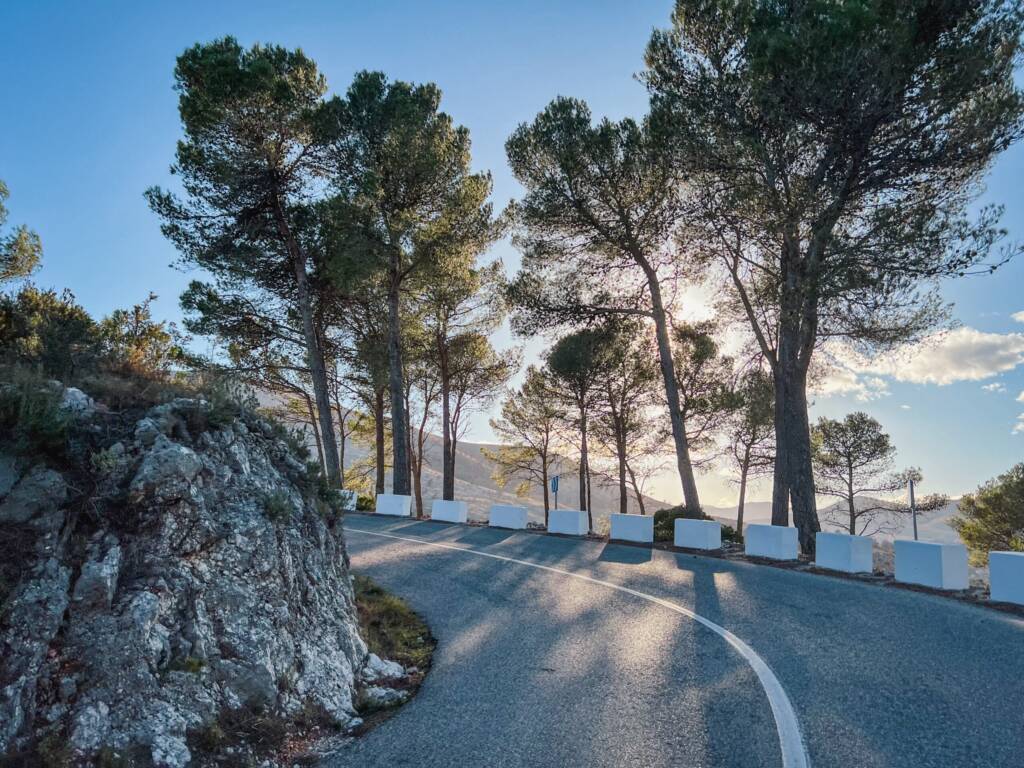
And once you’re out of Pego, passing through at least Petracos, you have to get back there somehow. The best idea would be to climb up from La Vall d’Ebo to the pass and skip down the road of a hundred curves with a beautiful view of the Mediterranean. This descent, especially when you are familiar with it and some of the blind turns no longer require as much attention as at the beginning, because you don’t have to brake at all in them, is pure fun. A great crowning achievement of even the longest day in the saddle. You let go of the brakes and cruise. That’s how you can ride home!

Benidorm CX
I have already explained why it is much better to go to Pego than to Calpe. However, originally, one of the main reasons for betting on the province of Alicante as a place to stretch a leg before the summer season paradoxically was… cross-country2. Yes, the reason I decided to go to Pego was because in January, for the second time ever, the cyclo-cross World Cup was organized in Benidorm. The fast gravel round both last year and this time brought phenomenal racing, with excitement until the very end of the race. After experiencing this spectacle from the screen a year ago, I longed to see it up close, to feel the speed and preview the true mastery of cross-country skills.
Was it worth it? Yes, it was, and I would gladly do the same next year. However, for the sake of fairness, it is necessary to mention a major problem of the event – the mostly very flat round does not allow you to observe the action in a wider perspective than that one corner or that one straight at which you happen to be standing. Despite this, the insanely dynamic racing, almost straight out of a road criterium, still generated a great deal of excitement. Especially when in front of our eyes the “big three” of cross-country cycling, namely Matthew, Lolut and Tom, were fighting with knives, forks and tire spoons.
Now what?
Will I return? As part of the answer to this question, phrases such as “yes,” “of course,” and “well, probably” my fingers tap out on the keyboard almost by themselves. Especially since I still have hundreds of kilometers of undiscovered roads to drive in the Pego area, dozens of places to see. Of the absolute must-see points that I didn’t have enough time for this time (also due to a cold and a weather breakdown), I can certainly mention Miserat, Puerto de Tudons or Bernia from the hardcore side and also many passes that I would gladly go the other way.
I also don’t know of another town so conveniently located that offers not one, not two, but several alternative trips directly to different climbs. In addition, with the help of a great team under the aegis of pego.cc, the logistics of such a trip become really simple. These are gigantic advantages that are difficult to overestimate when going on a vacation trip “to ride” or on a strictly training trip.
However, I know that I have the soul of a traveler in me, and apart from literally a few places to which I return like a boomerang, I like to explore more. We’ll see what time brings, but I’m already seriously considering that January in the year twenty-five will again include those four letters: p, e, g, o.
Appendix. Route suggestions from Pego
- I promise to write about it someday – the text is getting closer and closer 😉︎
- By the way, I dismiss rumors that I have switched from competing in cross-country to riding in ultra races. No, nothing of the sort happened, and my cross-country absence has a completely different background. In a nutshell, I think I just needed a break. ︎
By: Krzysztof Sienkiewicz https://gdziejestkrzys.pl/

